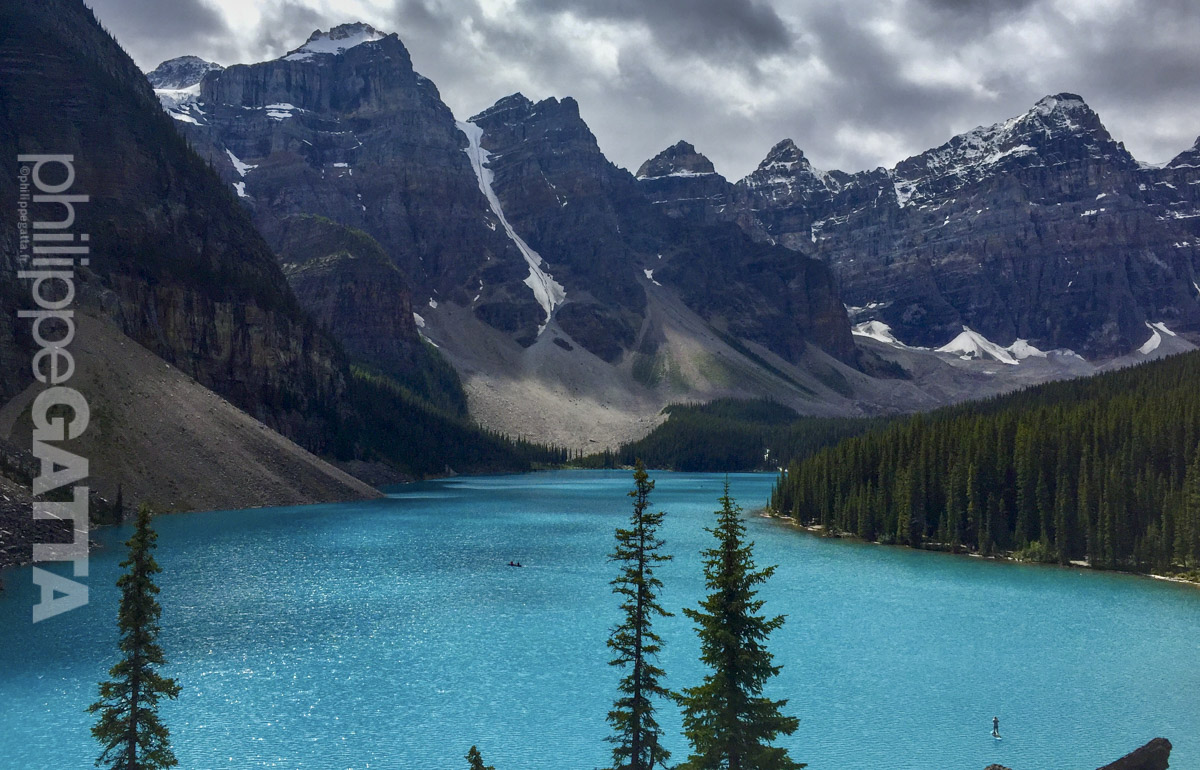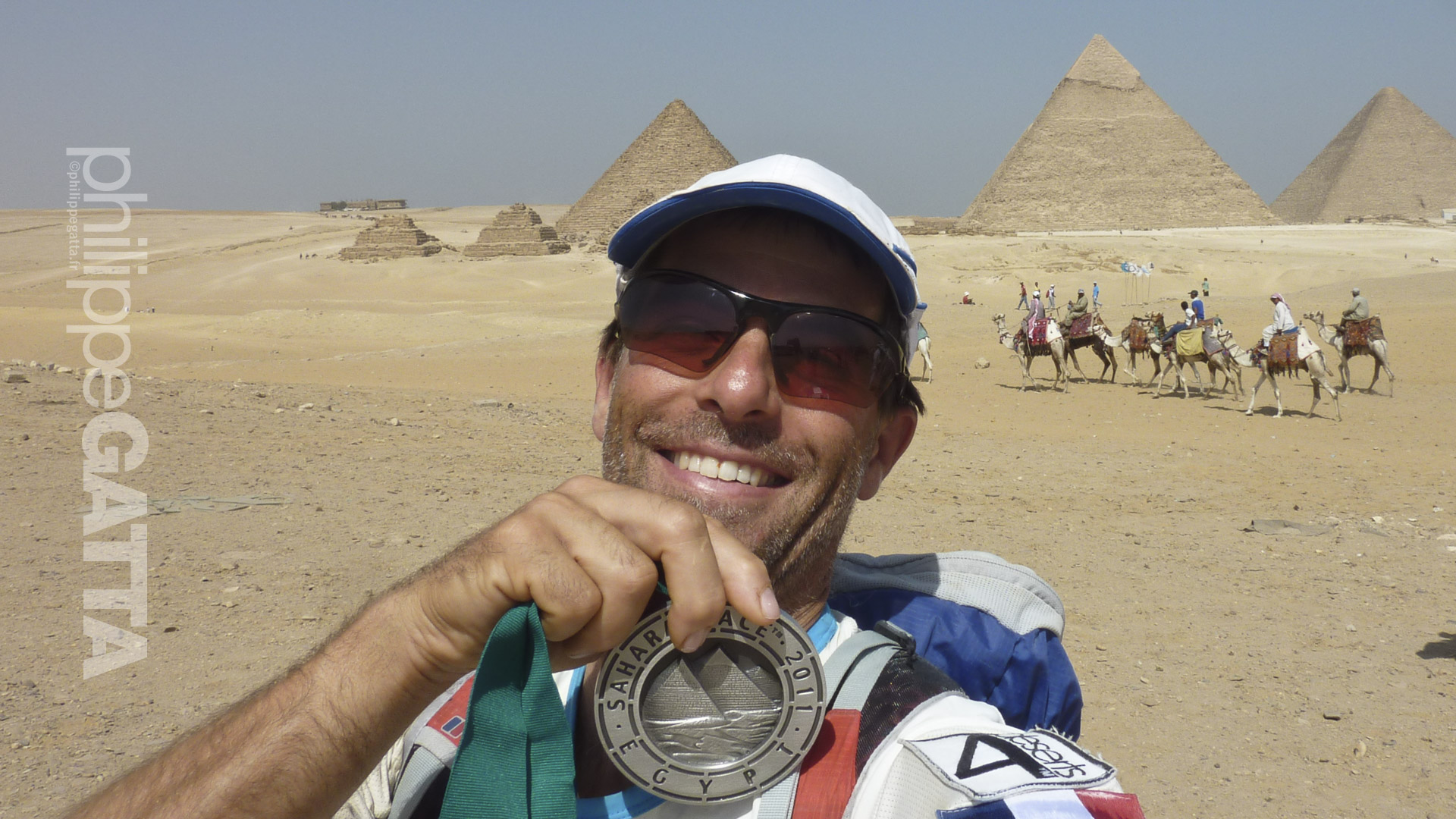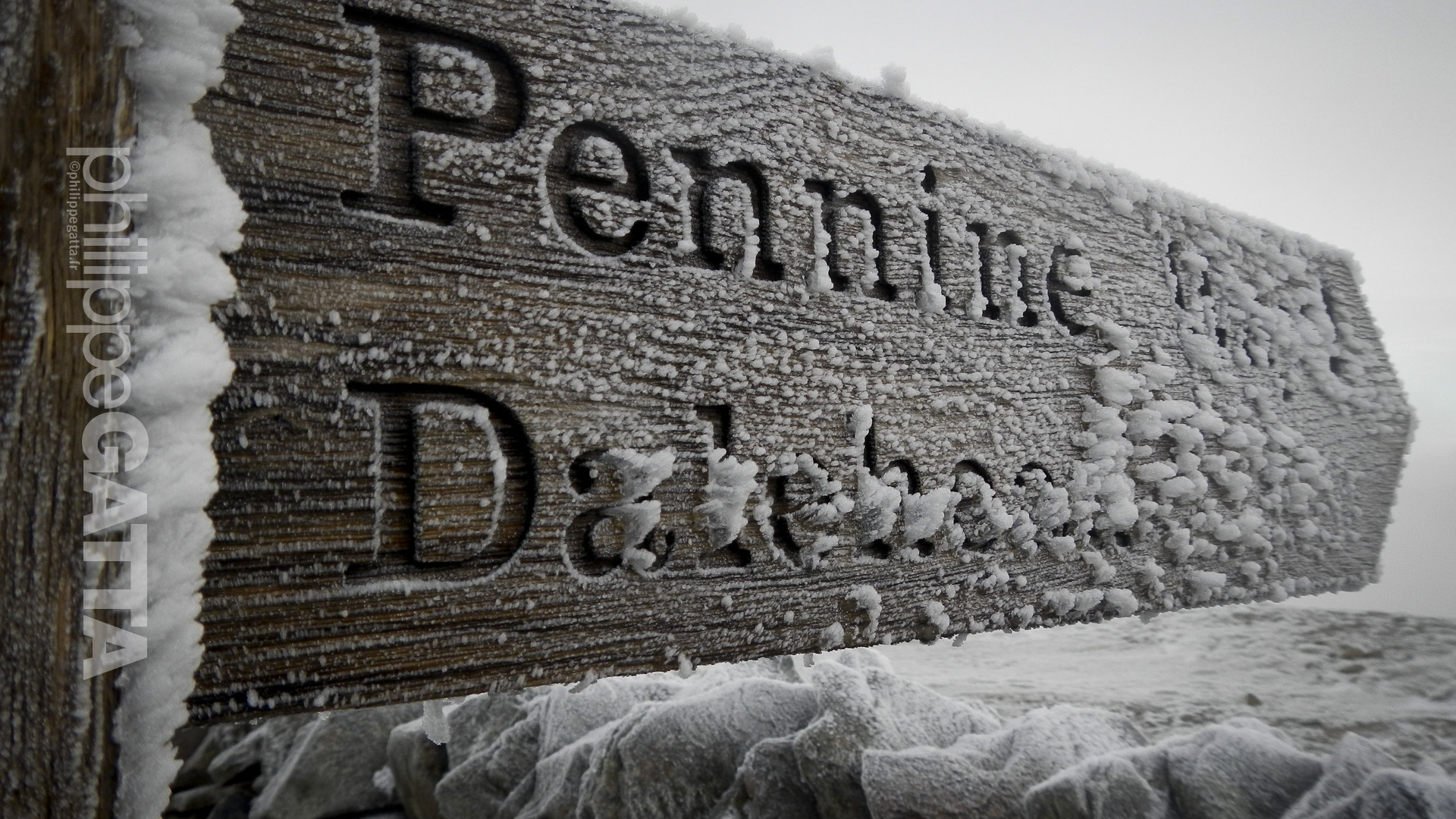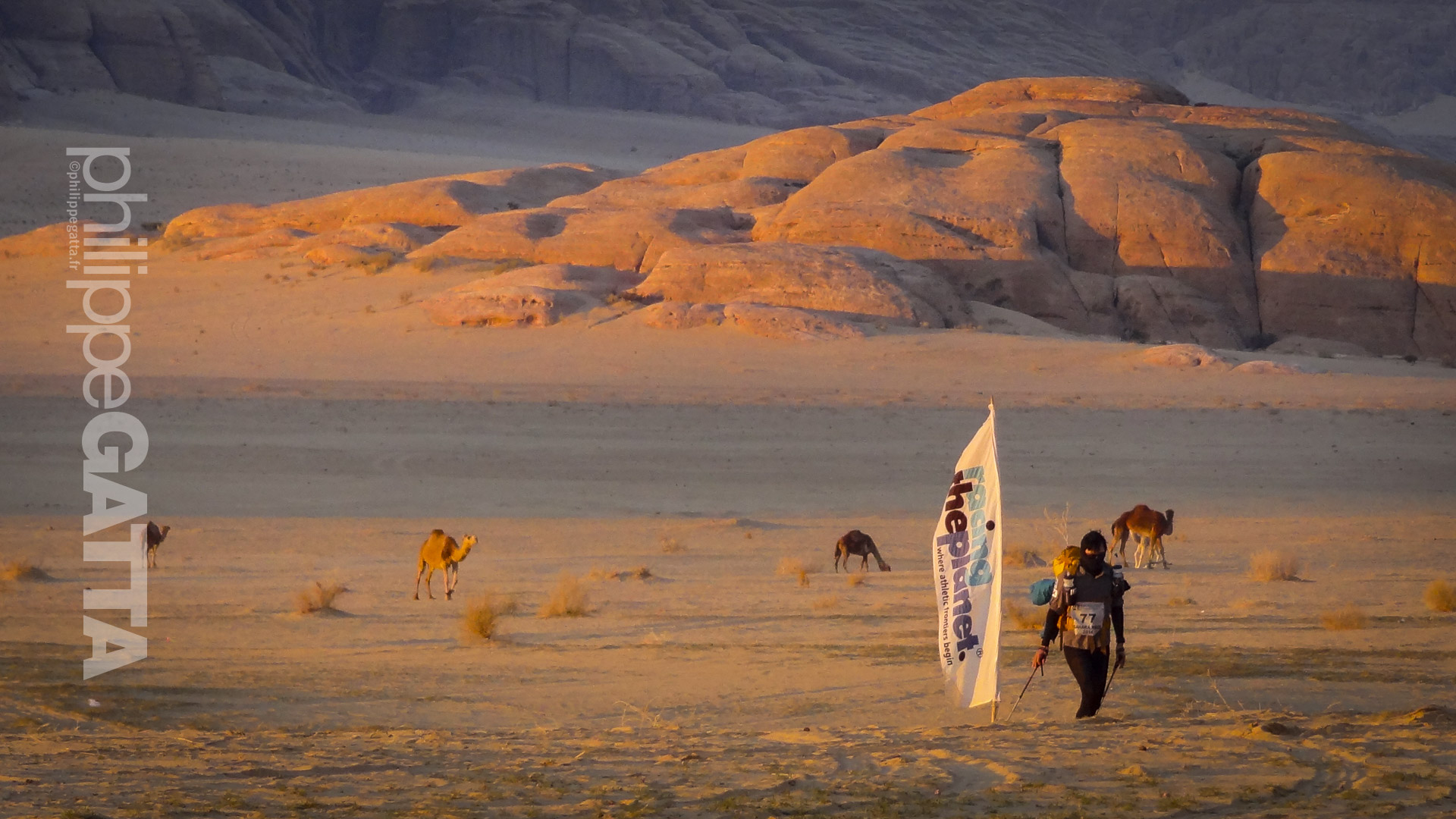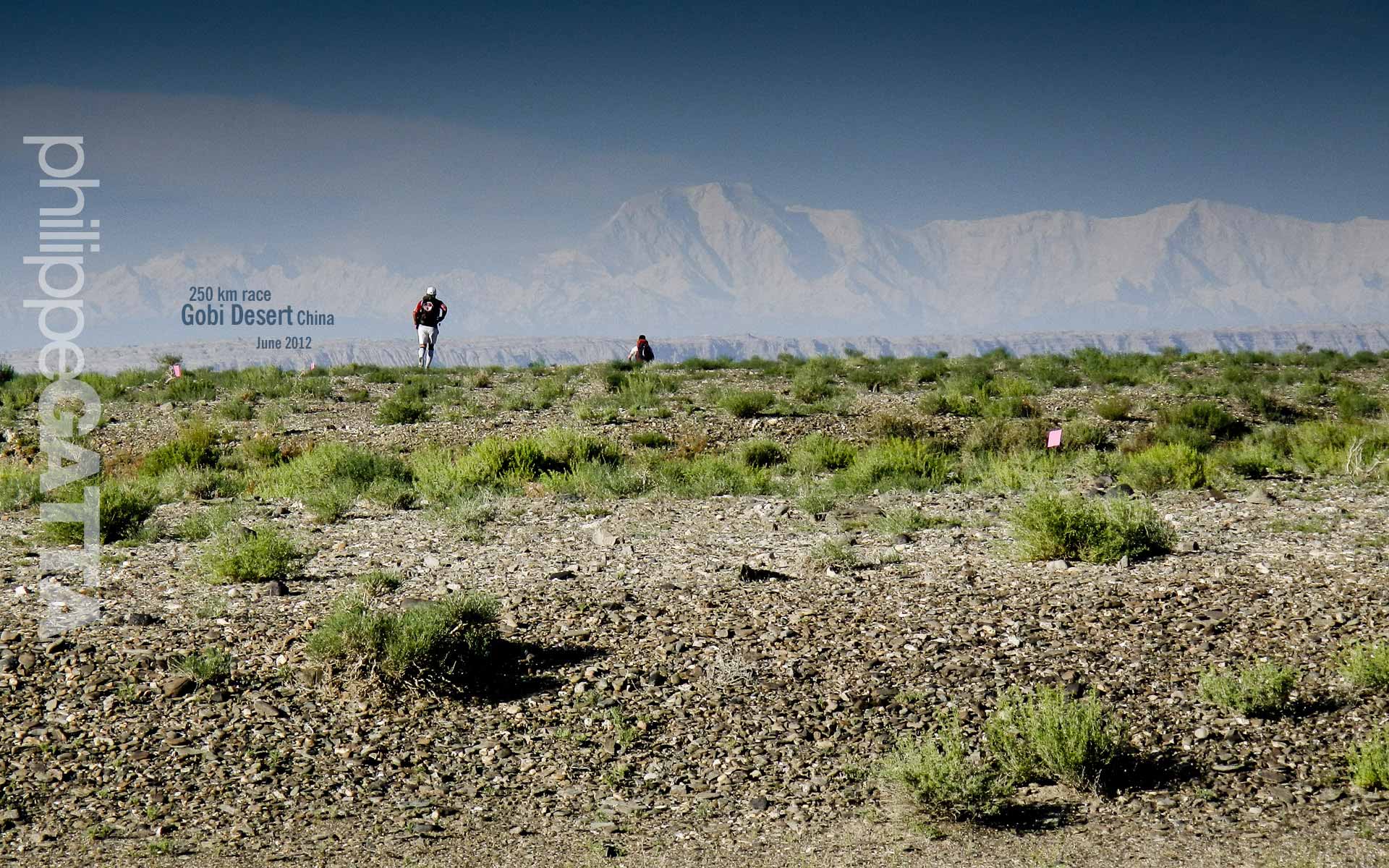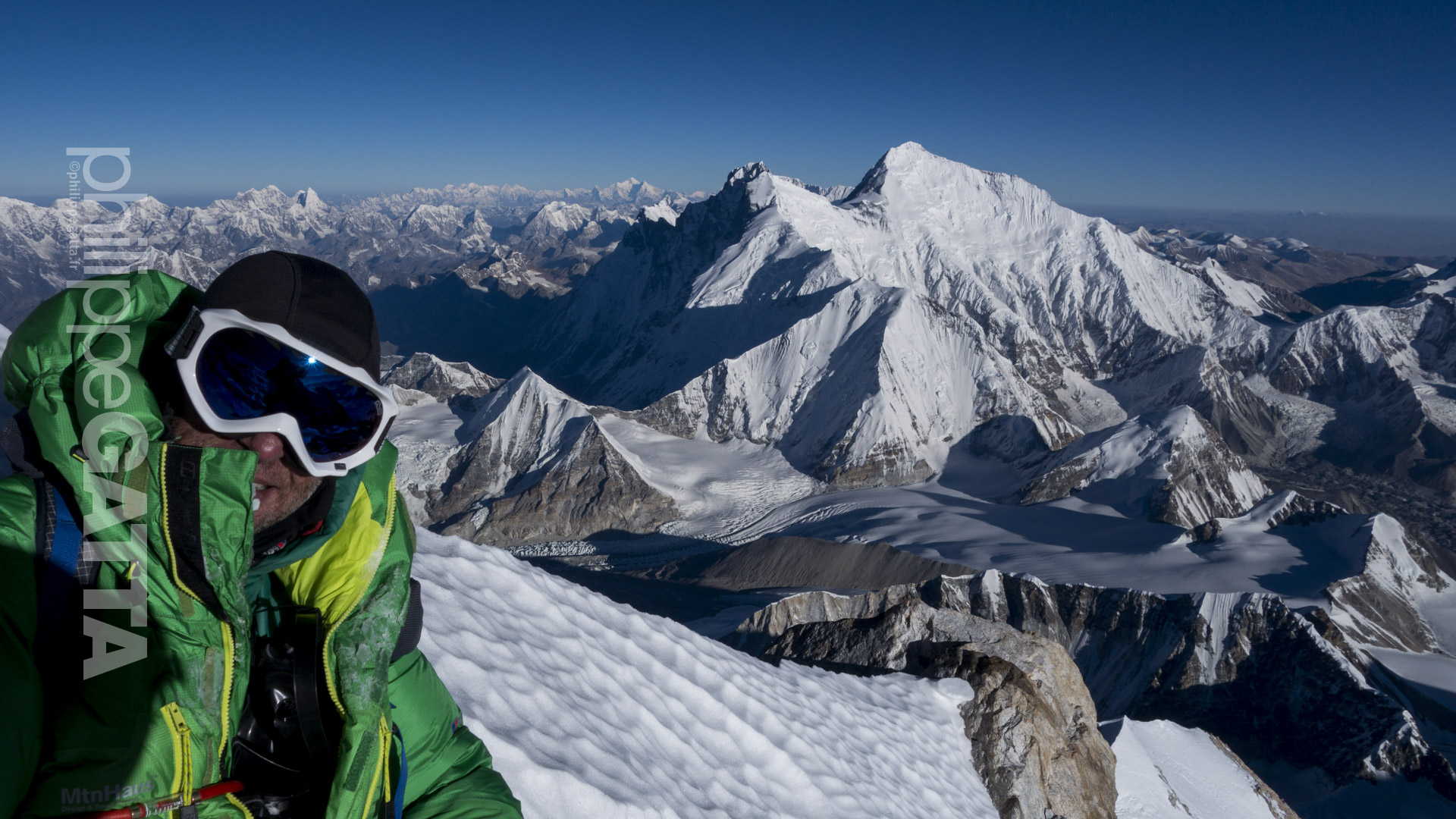Atacama Crossing
250 km running race in the Atacama, Chile
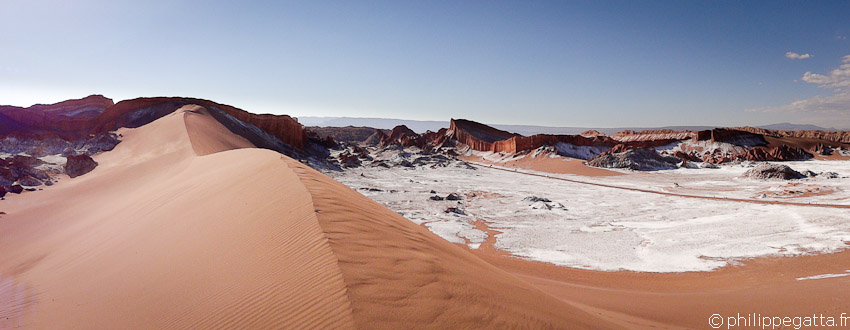
Atacama Crossing: 250 km running race in Chile (© P. Gatta)
The Atacama Crossing Race
The Atacama Crossing is a 250 km (155 miles) running race which takes place in the Atacama desert, around San Pedro de Atacama, Chile. There are 6-stages in 7 days: almost 4 Marathons in 4 days, then 74 km, a rest day and a final stage of 11 km.The Atacama Crossing race is self-supported, which means that we have to carry all our clothes, sleeping bag, mandatory equipment, medical/safety kit and 7 days of food in our pack. The race organizer only provides us with water (10 to 13 liters per day) and the tents for the nights. So choosing the right kit and food is a real challenge as everything has to fit in a relatively small pack. The goal is also to keep to the weight of the pack below 9 kg, without water.
The concept and difficulty of the race is very similar to the Marathon des Sables and all 4 Deserts races organized by RacingThePlanet: the Sahara Race, the Gobi March, the Atacama Crossing, Jordan, Madagascar and the Last Desert in Antarctica. Many competitors think the Atacama Crossing is the hardest one.
The temperature is also a difficulty to consider as it reaches as high as 46°C in the day (recorded on my watch during the long stage) and goes down to 6°C during the night. That means the nights are cooler in Atacama than they are in Marathon des Sables and the Sahara Race, so we have to bring more clothes. Also the ground is more rocky at the camps so we have to bring a mattress too. Last but not least, the race takes place between 3,500 m and 2,400 m of elevation but we can't do much about it...
Anna Gatta and Philippe Gatta decided to stay the entire race together and run as a Team.
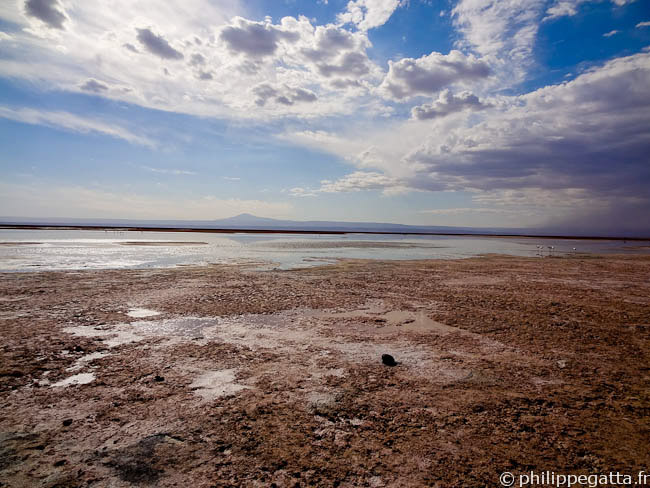
Laguna Chaxar, Salar de Atacama (© P. Gatta)
Video of the Atacama Crossing Race
Video of the Atacama Crossing Race (© P. Gatta)
Itinerary of Atacama Crossing Race
The Atacama Crossing Race lasts 10 days. Competitors have to reach San Pedro de Atacama (Chile) at least two days before the race. On the Saturday there is the race briefing, equipment review, check-in and the drive to the first camp. The race starts the Sunday morning and ends the Saturday.The race starts in the Rio Grande Valley, 40 km Northwest of San Pedro de Atacama at an elevation of 3,050 meters. Then it goes toward the Southeast through some open terrain and nice canyons.
The second stage starts in a canyon and crosses a river multiple times, then it follow a fantastic ridge above the Valley of Death and finished in the nice Laguna Cejar (lake) in the Salar of Atacama (salt flat).
The third stage continues in the same direction, crosses some difficult salt flat, goes up toward the ALMA observatory, passes a beautiful oasis before reaching the camp.
The forth stage crosses the village of Toconao before going back in the Salar of Atacama. The camp is located at the Ojos del Salar, two small lagoons.
The long stage makes some kind of U shape in the Salar of Atacama, then it crosses the Cordillera de la Sal and goes North to cross the Valley of the Moon (Valle de la Luna).
The last stage is short and goes from the Valley of the Moon (Valle de la Luna) to San Pedro de Atacama.
Competitors run on various grounds ; salt flat, sands, rocks, dirt roads for a total of 230 km and an elevation gain of 1,510 m, elevation loss of 2,210 m measured with a Suunto T6d. The altitude ranged from 3,050 m to 2,320 m.
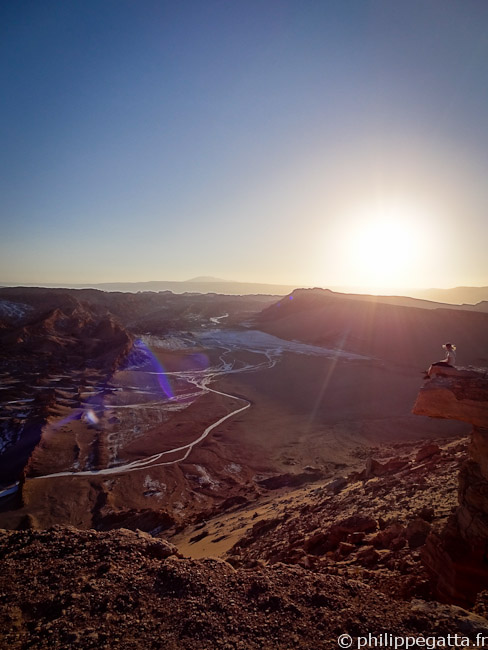
Valley of the Moon / Valle de la Luna (© P. Gatta)
Kit and food for the Atacama Crossing Race
Anna and I spent lots of time to choose our kit and food for the race.Here are the kit that each of us brought for the 7 days of race:
- 1 Berghaus Octans 40 Pack (600gr)
- 1 Berghaus Argentium Cool Base Crew long sleeves Tee-shirt
- 1 Berghaus Argentium Cool Base Crew short sleeves Tee-shirt
- 1 Berghaus Ilam Down Jacket
- 1 Berghaus Scorch Micro Grid Half Zip
- 1 Berghaus Technical Tights
- 1 Tight Shorts
- 3 pairs of Berghaus Fast Track Cushioned Socks
- 1 pair of Berghaus Powerstretch gloves
- 1 Berghaus Powerstretch Hat
- 1 Berghaus Camera bag
- 1 Berghaus Sol Neck Gaiter (Buff)
- 1 Suunto Core watch with compass and altimeter
- 1 Suunto T6D watch with heart rate monitor and Foot POD (distance/speed)
- 1 pair of sunglasses category 2-4
- 1 sleeping bag comfort 4°C
- 1 cap
- 1 foam mattress
- 1 pair of light gaiter
- 1 pair of Trail running shoes: Berghaus Limpet Low for Anna
- 1 Nikon AW100 camera + 3 batteries
- 1 knife, spoon & fork
- 2 headlights
- 1 safety kit: 1 red flashing light, 1 whistle, 1 life blanket
- 1 medical kit: blisters kit, alcohol, pain relief medecines, bandages, sunscreen
- Food, electrolytes, energy & recovery powder and vitamins
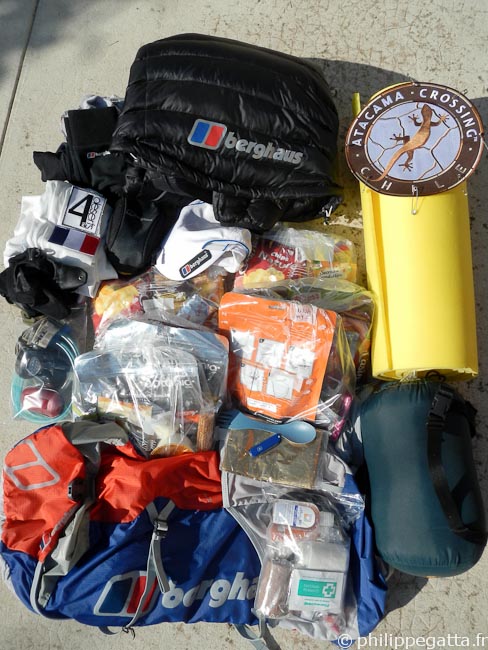
Kit and food for the Atacama Crossing (© P. Gatta)
The other difficulty was to choose the right balance between Protein, Carbohydrates and Fat. Here is the breakdown: 16.5% of Protein, 57% of Carbohydrates and 26.5% of Fat. We also had to find food that can resist 7 days at temperatures up to 40°C, that can fit in a small pack without being totally smashed, that is light (freeze dried food) but still is pleasant to eat as the race lasts 7 days. Just look at your trolley out of the supermarket when you shop a week worth of food and try to fit that in a small back pack.
The Atacama Crossing Race 2012
March 3: Briefing and transfer to Camp 1
The 160 competitors coming from 35+ different countries arrived in San Pedro de Atacama the previous days.The last day before the race, Anna and I had a good breakfast, enjoying the comfort of a nice hotel before leaving for 7 rough days. Then we met with all other competitors and the race staff for the briefing, gear and medical review.
We left at 3pm to the camp 1 which was 1.5 hour from San Pedro de Atacama in the Rio Grande Valley.
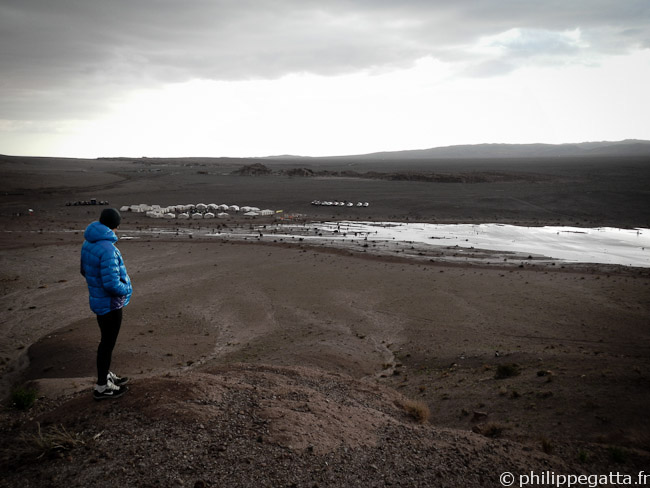
Philippe at camp 1 (© A. Gatta)
During the full week we shared the tent with two French; Cécile Bertin and Fabrice Trioullie and five Germans. Cécile is aiming for the Grand Slam; running all 4 desert races in one year.
The rain arrived in the afternoon so everybody rushed to cover the tents with some plastic. We also did the first weight control and blood tests since we participated in a medical research project analysing the changes of sodium levels in multi-day endurance sport athletes.
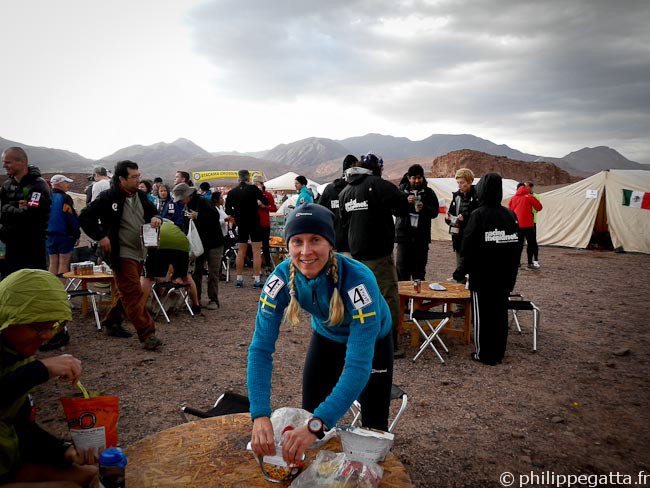
Anna eating her first diner at camp 1 (© P. Gatta)
March 4, Stage 1: "Navigation by Rock" - 33 km
The storm we had during the night went away and the sky was totally clear when we woke up. At 3,050 meters it was pretty cold and we appreciated our Down jackets. Like every day, we had a course briefing at 7:30 and started the race at 8am.
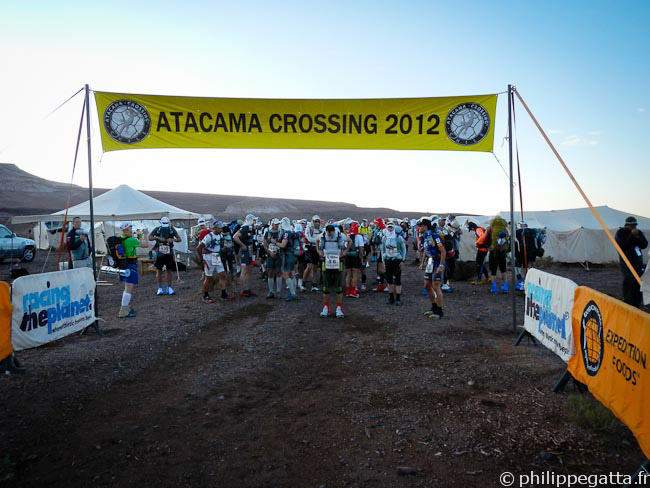
Start of the stage 1 of Atacama Crossing (© P. Gatta)
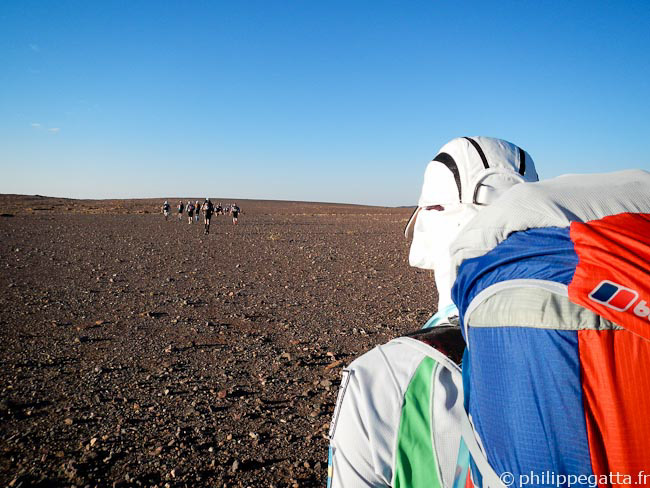
Stage 1: the first section (© P. Gatta)
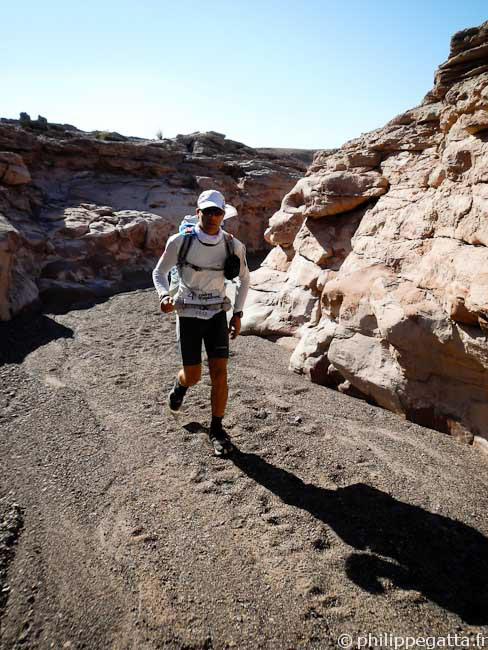
In a canyon (© A. Gatta)
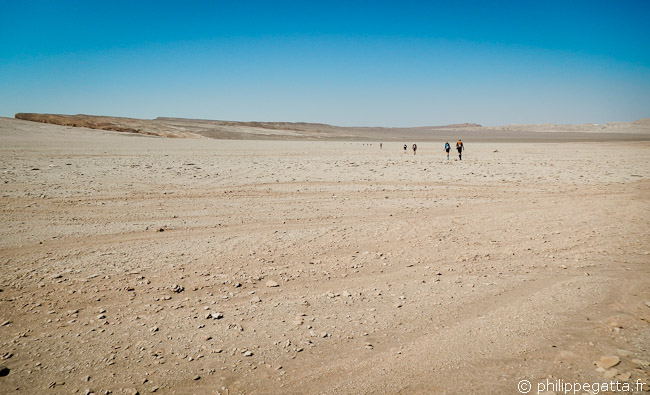
Half way through the Stage 1 (© P. Gatta)
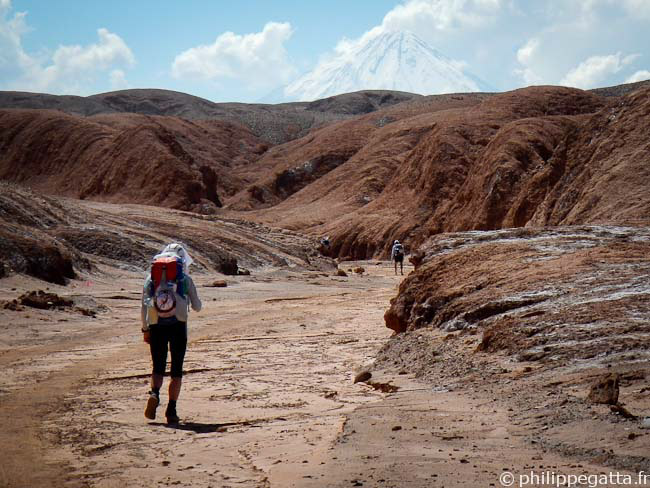
Anna in the last Canyon, Licancabur Volcano in the background (© P. Gatta)
Arriving in camp 2, we had a wind storm and we had to hold the tent to not loose it all! As always on this kind of race, it is not finished when we pass the finish line because we have to take care of the blisters, cook, eat, etc. And at the arrival we had to do the medical control - being picked in the finger to leave blood even before sitting down
At 6pm, the last competitor arrived after almost 10 hours of effort, respect!
Vicente Juan Garcia Beneito won this stage in 2h42, we finished in 4h49 and the last one finished in 9h51.
March 5, stage 2: "Slot Canyons" - 34 km
After yesterday's heat and the hot winds at camp, Anna started wondering what she was doing here...She got the answer that day with a FANTASTIC stage of 34 km.
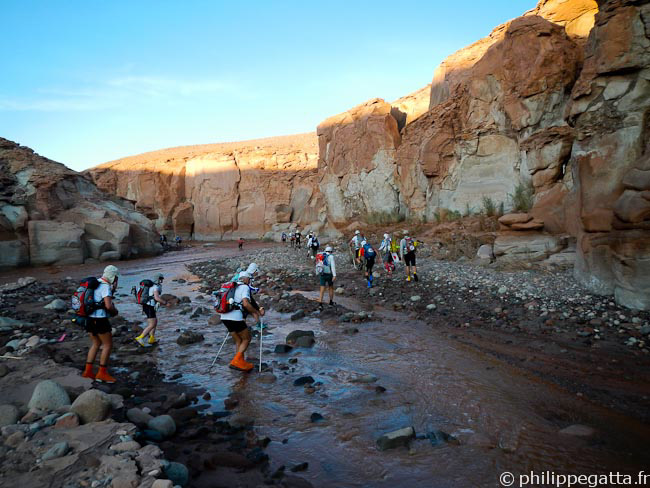
Crossing a river at the beginning of the stage 2 (© P. Gatta)

Stage 2 (© P. Gatta)
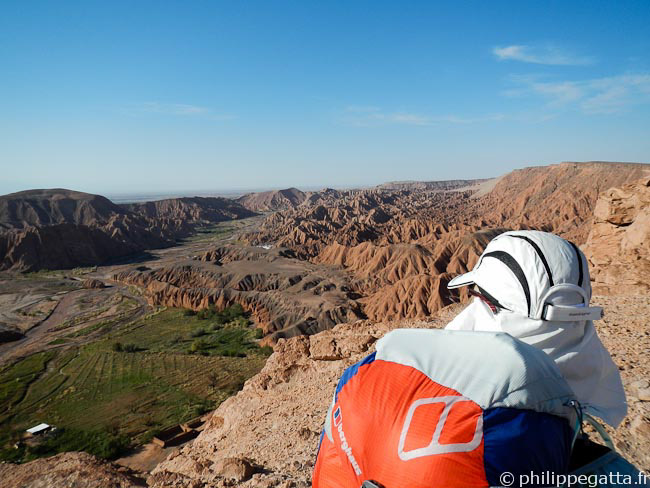
An oasis and the Valley of Death (© P. Gatta)
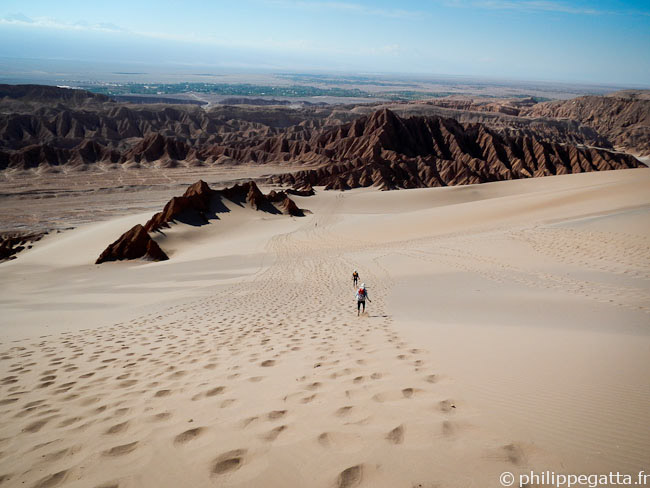
Descending a big dune toward the Valley of Death (© P. Gatta)
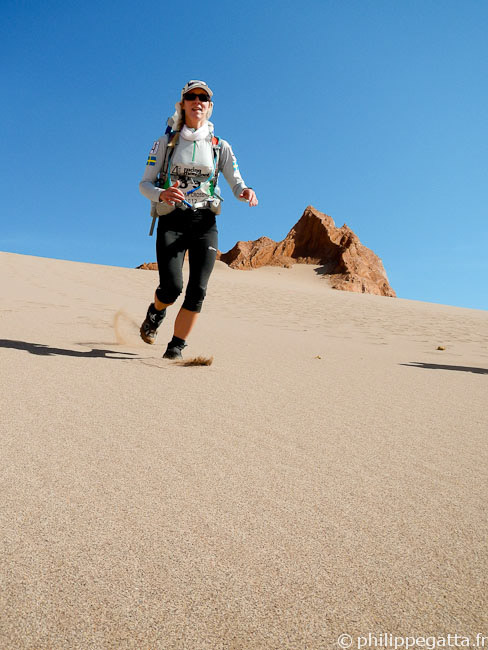
Anna descending a big dune (© P. Gatta)
As always on these races, there is a flip side; it was extremely hot in the tent, the wind picked up again shaking the tent like crazy. It was like being in front of a massive hair dryer for hours.
Then we spent 30 minutes to take care of Anna's blisters (thanks Fabrice!). When we add the time spent waiting for a free laptop in the Cybertent, cooking and eating the day was already gone. We wished we had more time to rest as we knew that the following stage was longer and tougher, with more crusty salt flat and rough terrain...
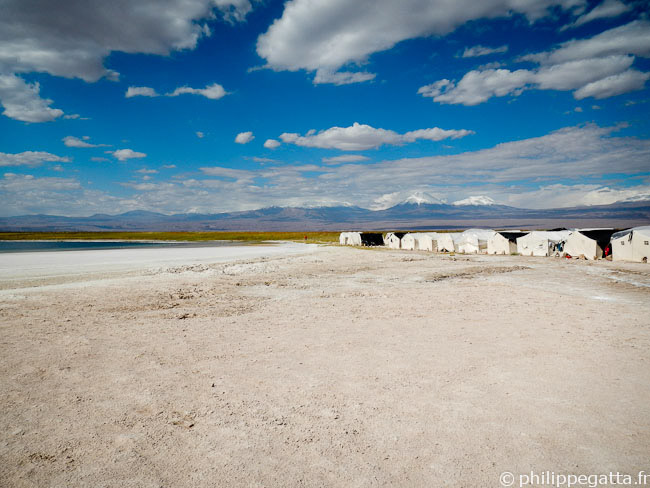
Camp 2, Laguna Cejar and Licancabur Volcano (© P. Gatta)
March 6, stage 3: "The Atacamenos Trail " - 41 km
It is usually the third day that most people quit the race. It is because we are already tired by two days of race, the body is not fully acclimatized and mentally we know that we still have a long way to go.
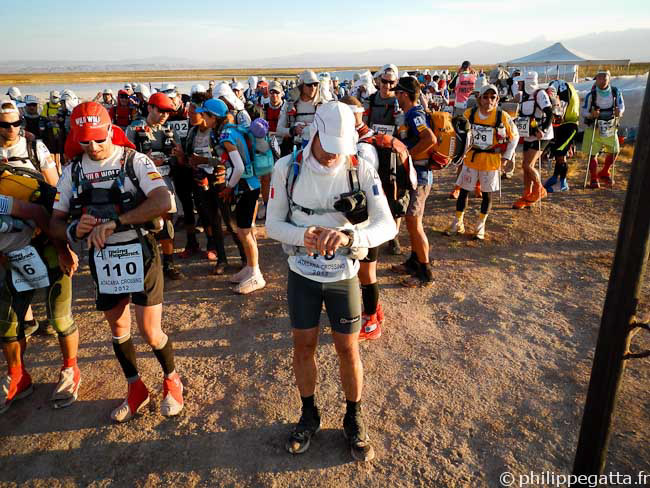
Start of stage 3 (© A. Gatta)
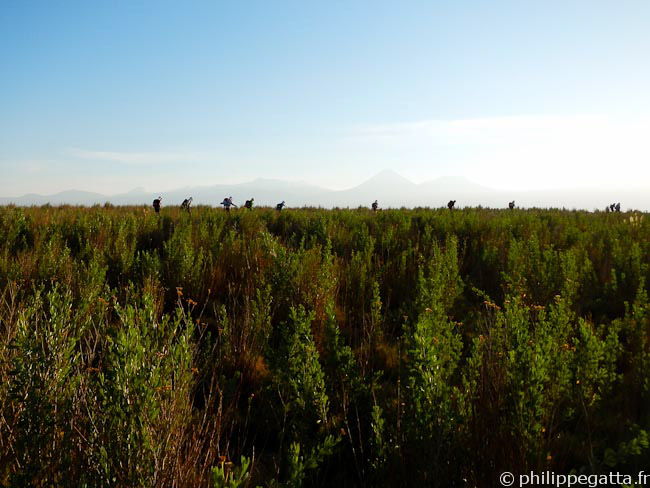
Runners in the high grass of the Atacama Salar (© P. Gatta)
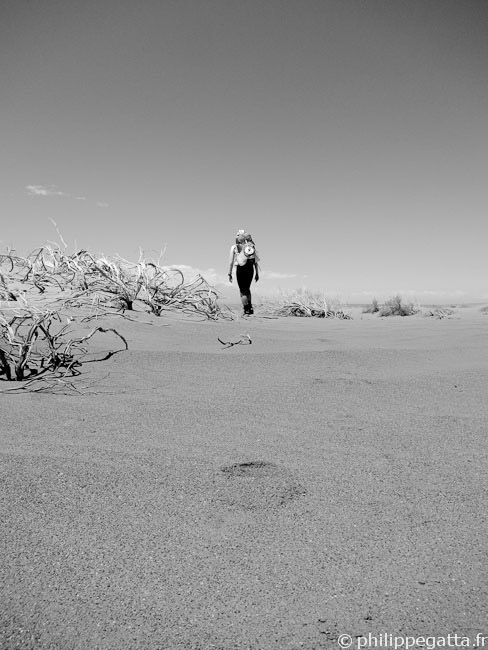
Anna in the dunes (© P. Gatta)
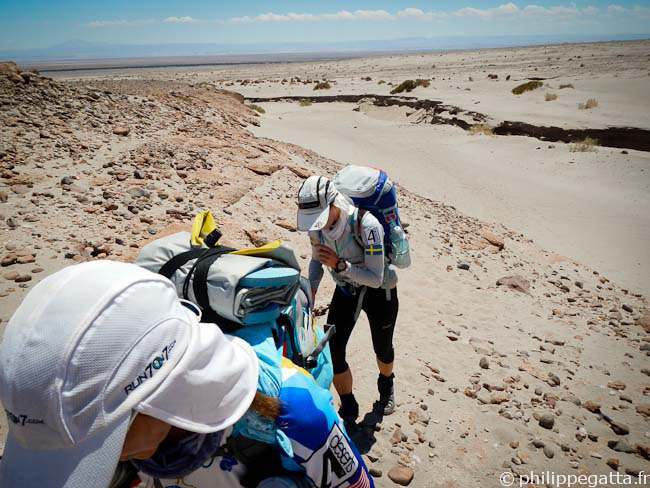
Sandra and Anna in the second half of the stage 3 (© P. Gatta)
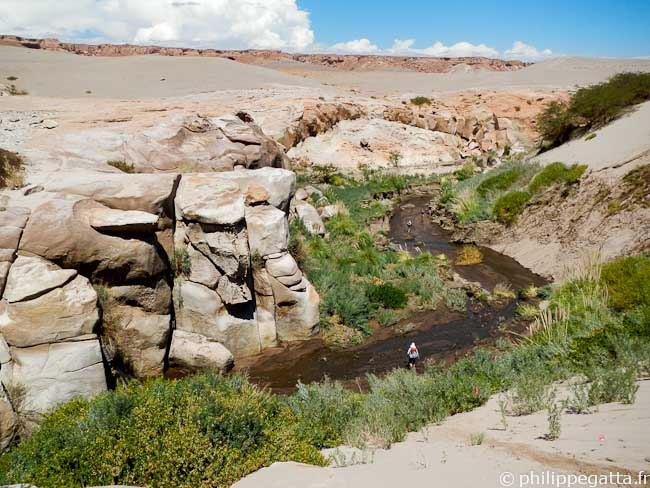
Oasis at the end of Stage 3 (© P. Gatta)
March 7, stage 4: "The Infamous Salt Flats" - 39 km
The beginning of this stage was pretty much like the end of the previous one; a rocky trail and sand dunes.
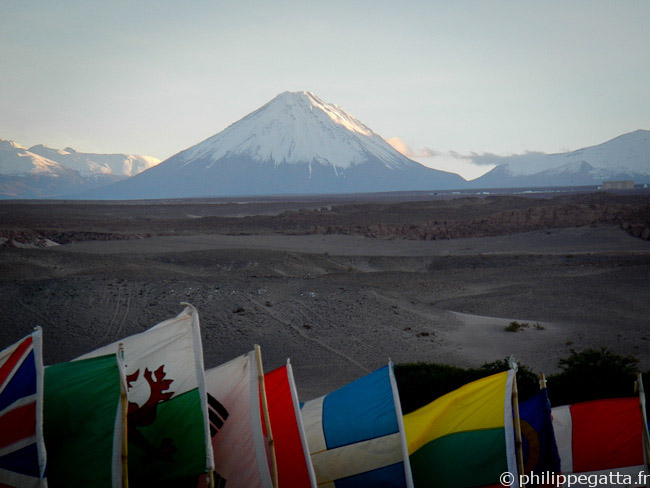
Sunrise on Licancabur (© P. Gatta)
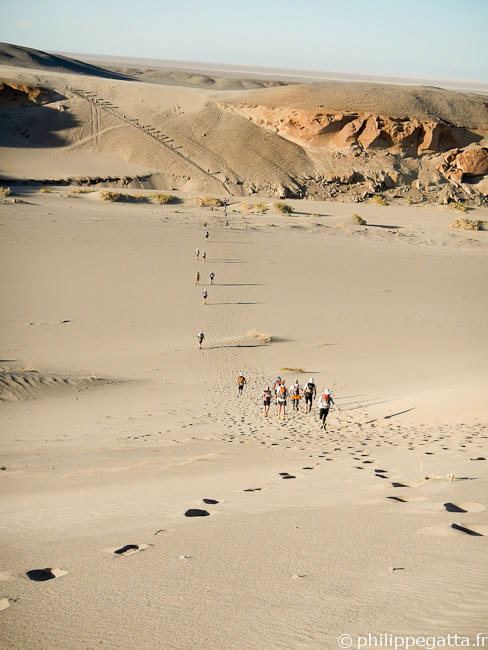
Sand dunes in the beginning of the stage 4 (© P. Gatta)
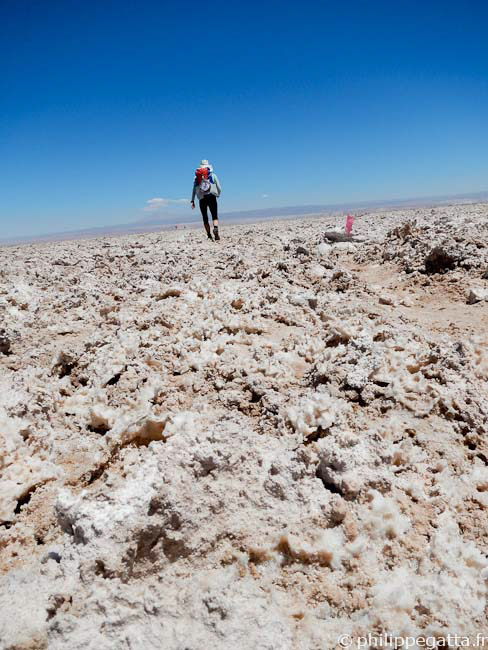
In the Atacama salt flat (© P. Gatta)
We entered in the Salar at the warmest time of the day. Anna was suffering from the blisters, the heat, the tough trail and the monotone views. She found it painful and horrible. Philippe enjoyed it tough, this place is so different from everything else and that's why he came here. His positive attitude helped Anna to stayed focused.
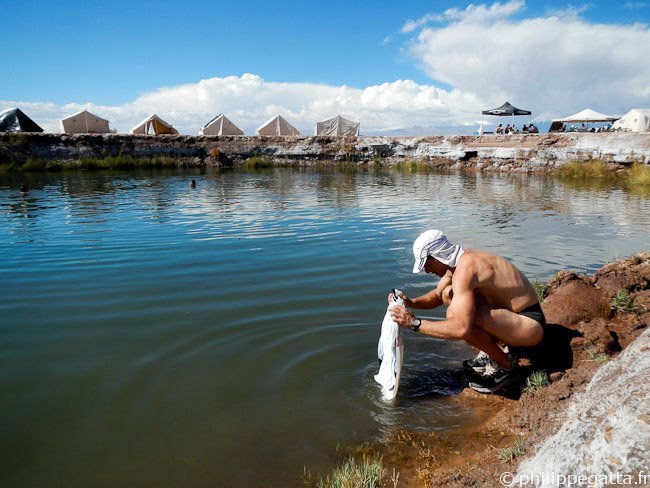
Washing clothes and swimming in the Ojos del Salar (© A. Gatta)
Later in the day we had another storm. It did not rain in the camp, but the lightnings were very close.
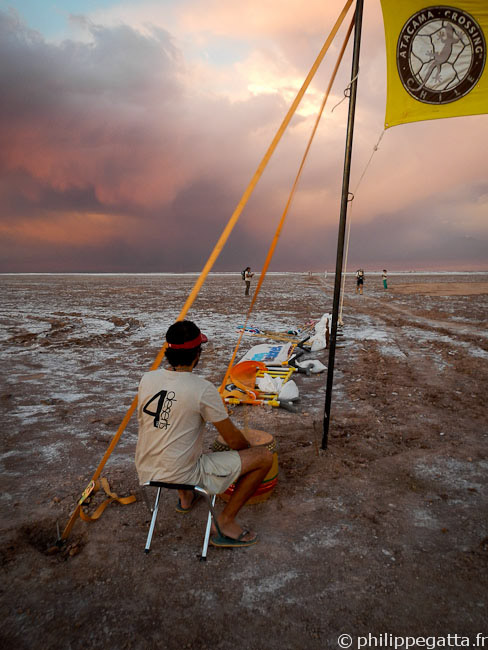
Last competitors arriving under a stormy sky (© P. Gatta)
March 8, stage 5: "The Long March" - 74.2 km
The long march is the most feared day of the 4 Desert races. It is almost a double-Marathon after 4 Marathons already done the previous days.Fortunately the nice camp and the swim we had the day before really helped mentally for this stage.
We started off this stage by running the first 20 km at around 8 km/h, taking advantage of the relatively easy trail and not too hot temperatures. Then after the CP 3 we entered the salt flats which was technically hard (crusty or soft salt) and very hot. The whiteness of the salt was intensively reflecting the light of the sun. The white ground looks like snow but it is just salt at around 40°C.
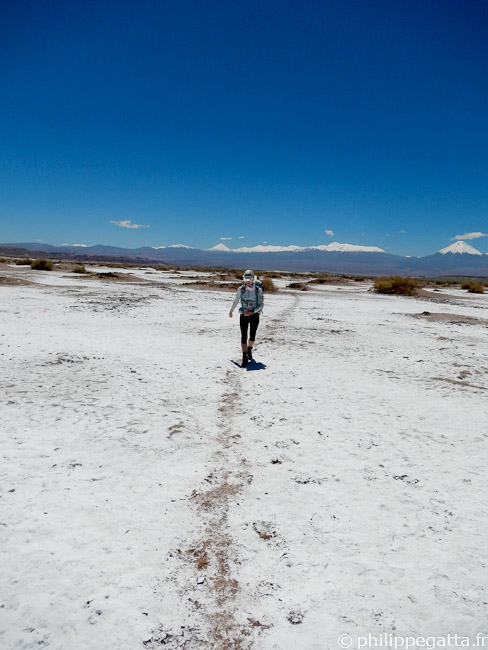
Anna in the Atacama salt flat, the Andes behind (© P. Gatta)
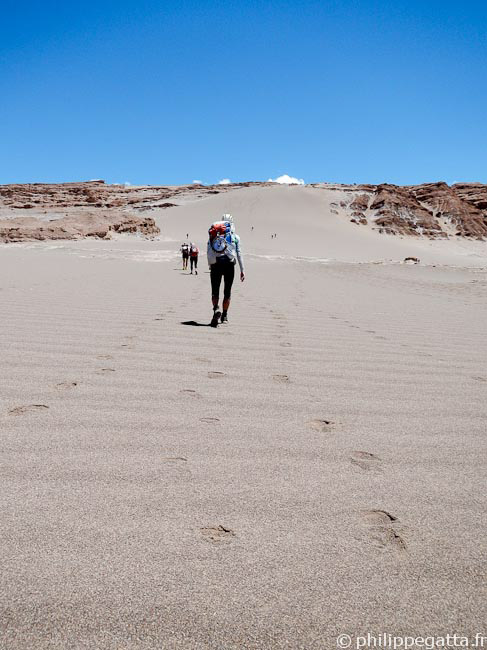
Crossing the Cordillera de la Sal (© P. Gatta)
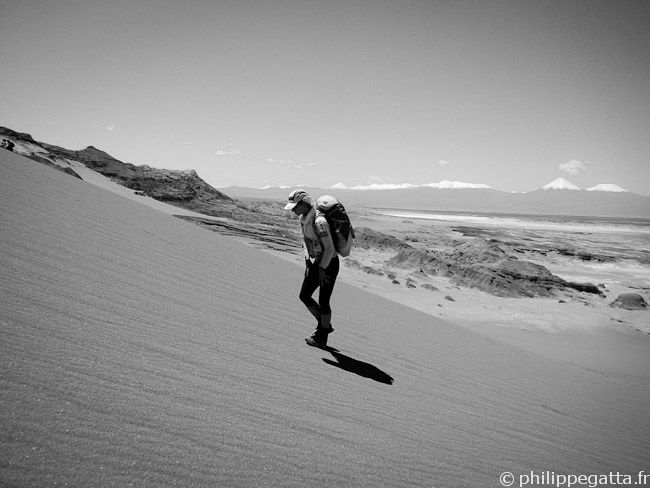
Climbing a big dune in the Cordillera de la Sal, Andes behind (© P. Gatta)
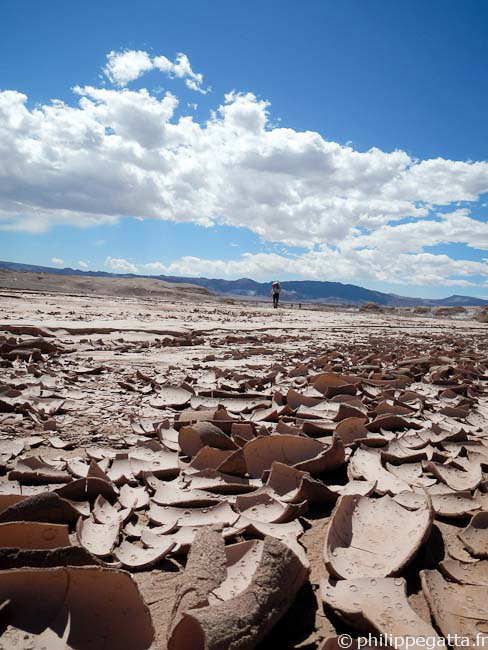
Between check point 4 and 5, temperature reached 46°C (© P. Gatta)
The wind was blowing like crazy when we passed the last CP, entering in the famous Valle de la Luna (Moon Valley).
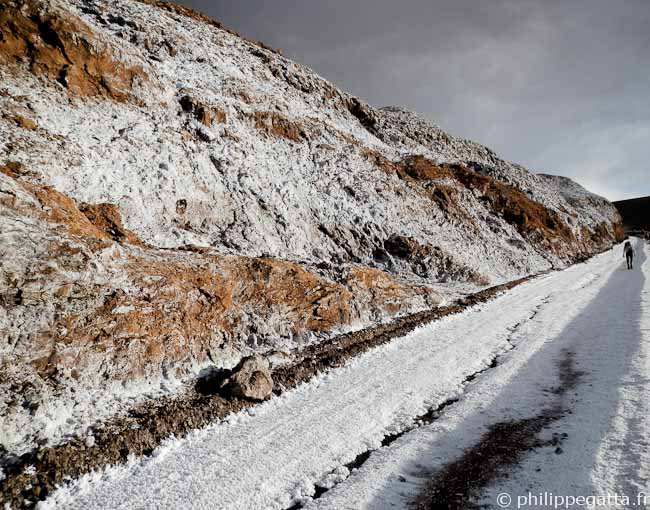
Salt covering the ground in the Moon Valley (© P. Gatta)
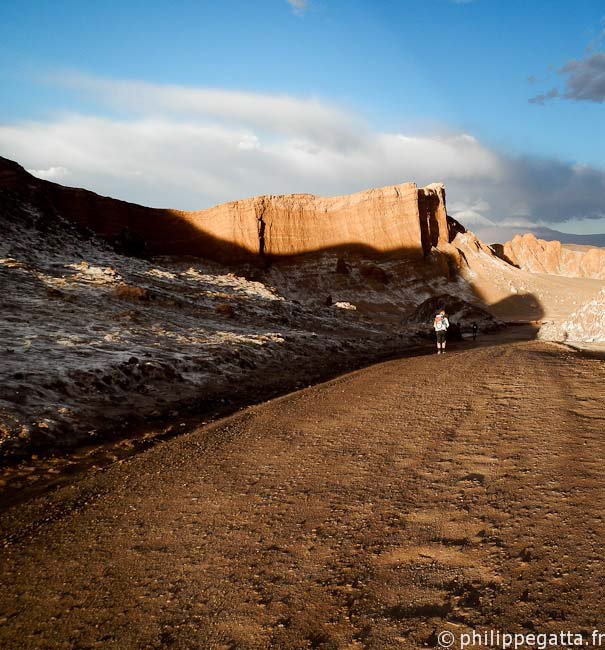
Amphitheater in the Moon Valley, 5 km to go (© P. Gatta)

Lightning in the Moon Valley (© P. Gatta)
We reached the camp after 12 hours and 20 minutes, just before the rain swept over. Anna spent another 45 minutes to heal her blisters, we made the final blood test and weight control, ate a bit and went to bed. Even if we were exhausted it was very hard to sleep after such a long stage, especially with the rain and wind around.
The organizer was really worried that the lightnings would hit the competitors on the trail or the tents of the camp. When the storm became serious they stopped around 35 runners who were still on the fields and in the camp we were ready to evacuate.
We used a Suunto T6d with a Foot Pod to record the distance, altitude, speed and temperatures throughout the race. We can see in the graph below the steep climb and descend of the big sand dune (36th to 40th km). We can also see the temperatures between 40°C and 46°C (40th to 48th km). As for the Sahara race the T6d has been of great help, knowing the distance and especially how far we are from the next check point helps managing the effort and water.
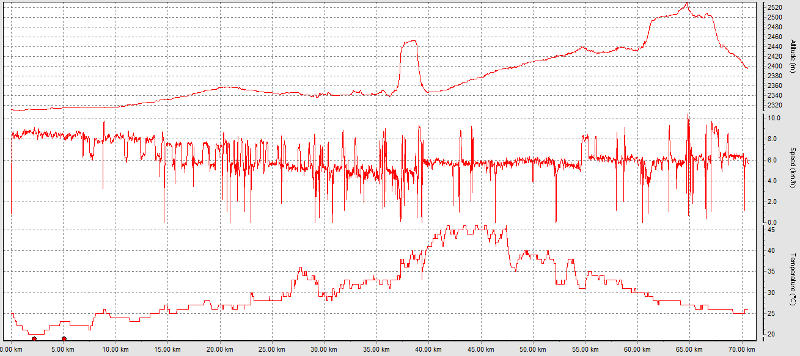
Distance, altitude, speed and temperatures recorded with the Suunto T6d (© P. Gatta)
March 9: rest day
One more time we woke up under a perfect blue sky. In the morning we could see on every face the extreme fatigue and the camp looked like an hospital with people full of strapping and limping around.At 10am, the runners who had to stop the long march because of the storm were brought back to where they stopped to finish the stage. For all other runners this day was a rest day that we spent resting and dreaming about the pizza and shower that we will have the following day in San Pedro.
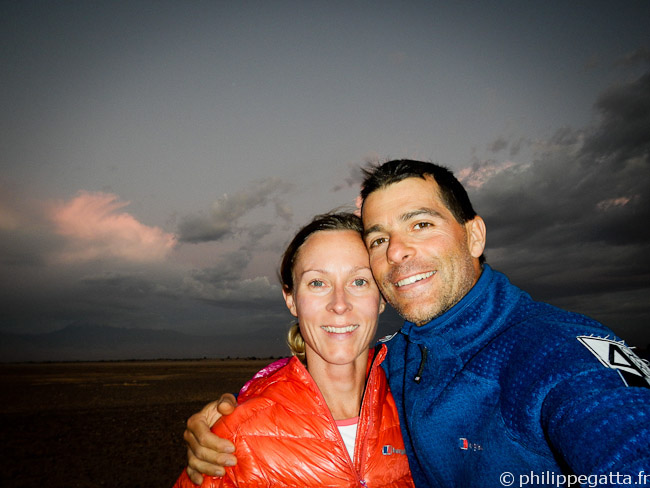
Anna and Philippe during the rest day (© P. Gatta)
March 10, stage 6: "Final footsteps to San Pedro" - 8 km
Today we had the course briefing at 10am instead of 7:30am and the good news was that we had only 7 km to San Pedro instead of the 11 km planned. In reality I measured 8 km with my watch and this extra kilometer has been horribly long.Passing the finish line is always an intense moment. We got a medal and perhaps more important we got pizza's and Coca Cola... We also got the result of the medical research showing that we had great values. Whatever we ate and drank during the race was perfect. That was good to hear. We both lost two kilos each, but that's kind of normal!
Vicente Juan Garcia Beneito won this stage in 34', we finished in 51' and the last one finished in 1h03.
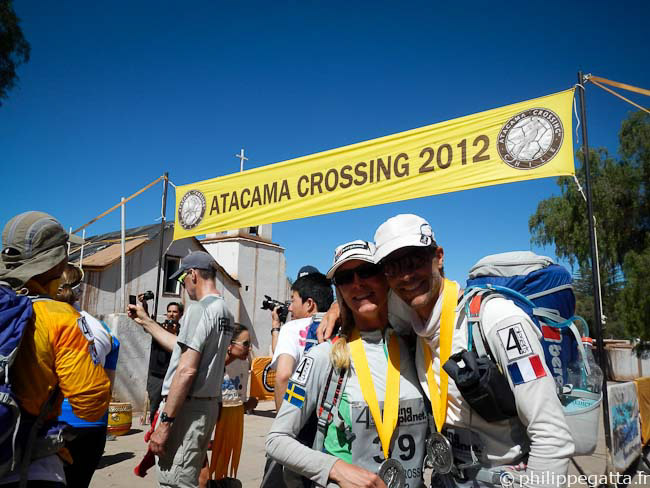
Finish line of the Atacama Crossing 2012 (© P. Gatta)
Atacama Crossing Race Results
Vicente Juan Garcia Beneito won in 23h46, Anne-Marie Flammersfeld won the women category in 29h49, Shrimathi Swaminathan -last finisher- finished in 63h06.Anna and Philippe finished 57th in 38h16, and Anna won in her age group and was the 6th woman overall.
130 runners have completed all stages of this 2012 Atacama Crossing Race out of the 152.

Atacama desert, San Pedro and the Andes (© A. Gatta)
